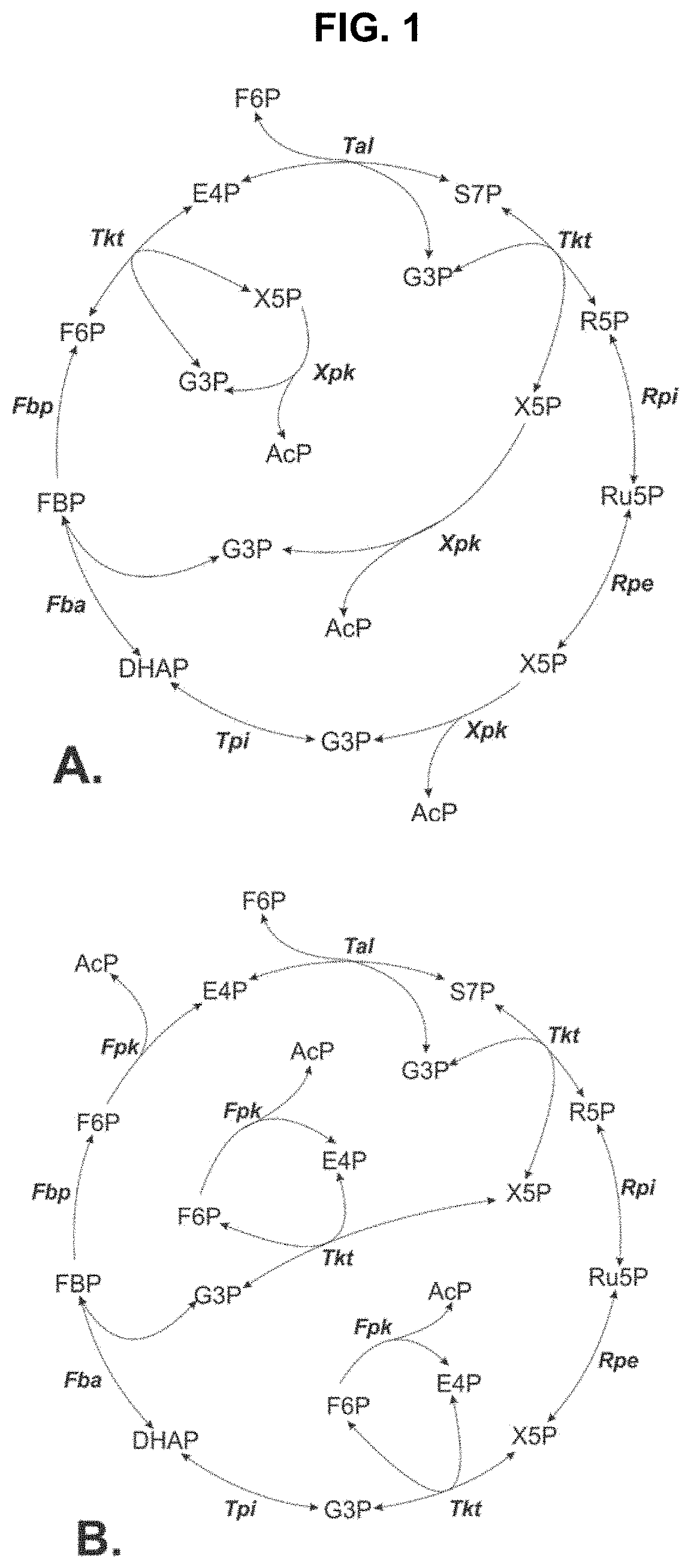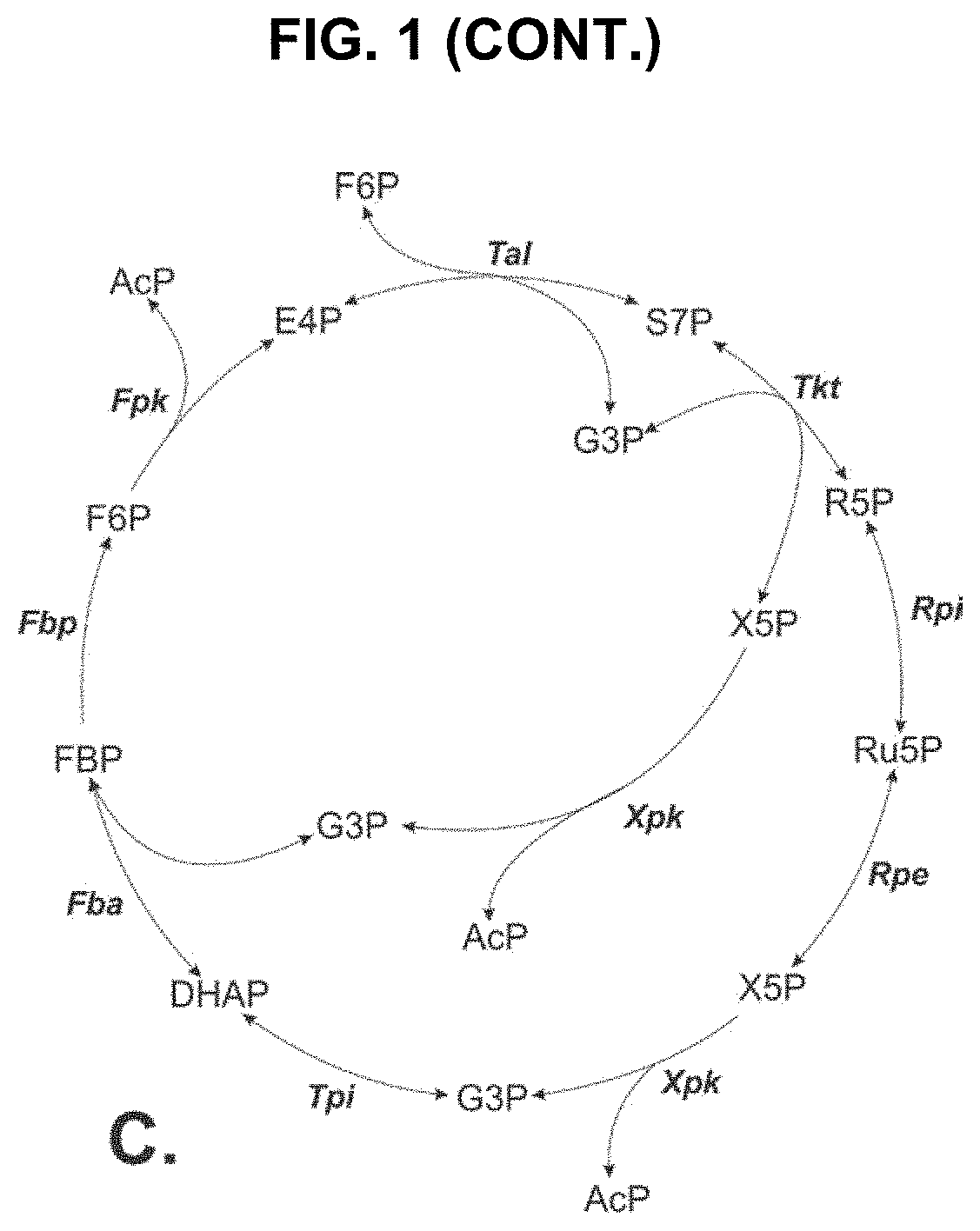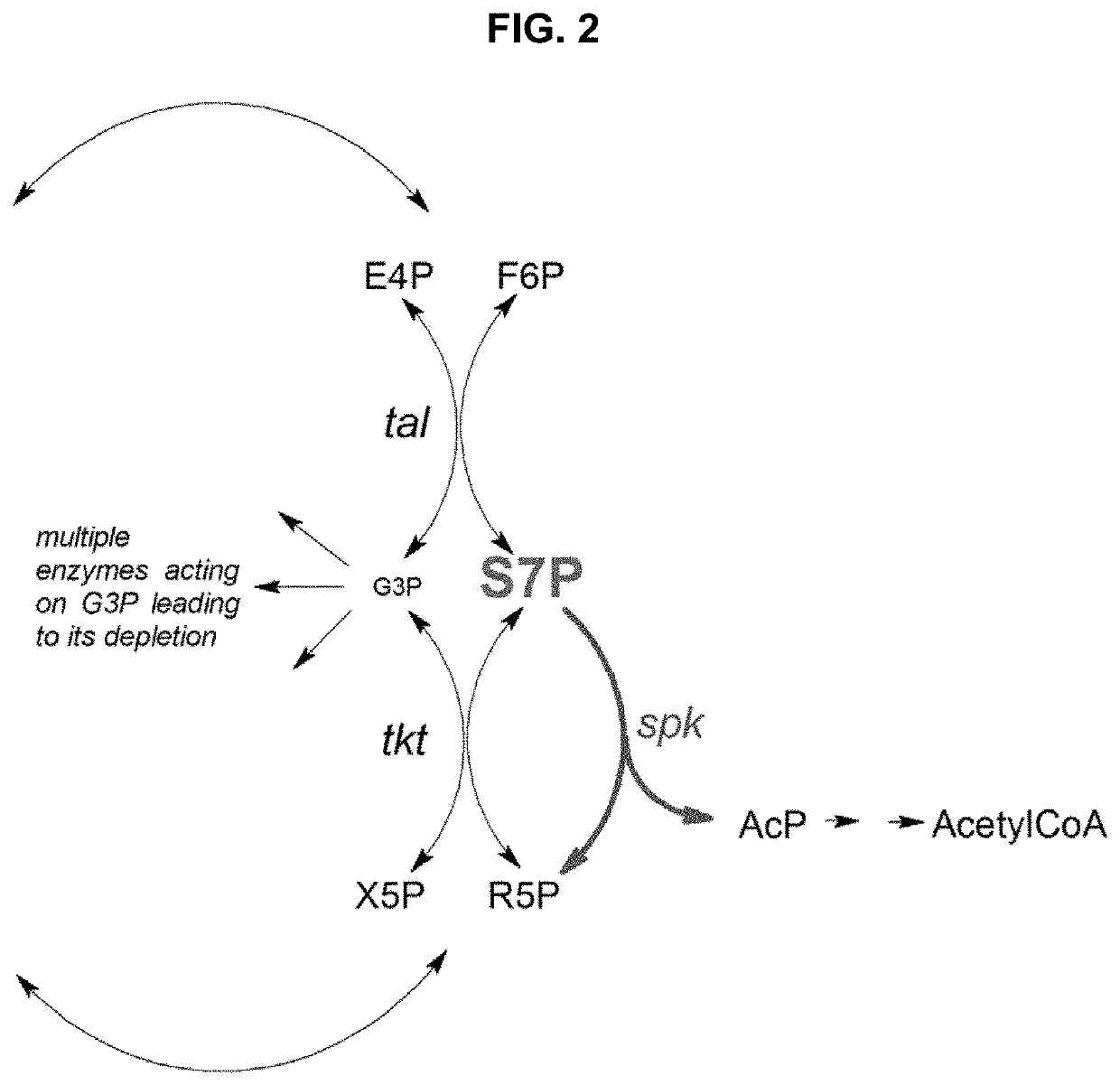Metabolic Pathways with Increased Carbon Yield
a technology of metabolic pathways and carbon yield, applied in the field of metabolic engineering of microorganisms, can solve the problems of inefficient use and complicating the control of activity of the enzyme, and achieve the effect of increasing the efficiency of the methanol condensation cycl
- Summary
- Abstract
- Description
- Claims
- Application Information
AI Technical Summary
Benefits of technology
Problems solved by technology
Method used
Image
Examples
example 1
Kinetic Simulation of the NOG Pathway in C. acetobutylicum
[0103]The kinetic parameters of C. acetobutylicum enzymes involved in the NOG pathway were measured experimentally or estimated from literature (Table 1) and compiled in a COPASI toolbox for kinetic simulations.
TABLE 1C. acetobutylicum NOG enzymes kinetic parameters,measured experimentally or estimated from literature.XpkFbpKm (μmol / ml)6.40.063V (μmol / (ml*s)0.000410.00029TalTktTkt′Keq1.0511.21101Vf (μmol / (ml*s)0.00530.00350.0035Vr (μmol / (ml*s)0.00510.00290.00035Kma (μmol / ml)0.2720.670.946Kmb (μmol / ml)0.7860.2350.67Kmp (μmol / ml)1.440.11.1Kmq(μmol / ml)0.3620.150.1TpiFbaRpeRpiKms (μmol / ml)6.451.145.972.47Kmp (μmol / ml)5.2527.7 5.7Kmq (μmol / ml)—2.4——Ki (μmol / ml)35.5 ———Kip (μmol / ml)—10——Keq—0.069 (μmol / ml)1.4141Vf (μmol / (ml*s)0.5 0.0033 0.0170.012Vr (μmol / (ml*s)11.8 0.048——
[0104]FIG. 5 shows a steady state simulation of the NOG pathway as illustrated in FIG. 1A with constant flux of xylose. FIG. 5 shows a rapid increase in S7P con...
example 2
Identification of a Phosphoketolase Having Sedoheptulose-7-Phosphate Phosphoketolase Activity
[0106]A yeast strain is constructed that has a deletion of the tkt gene(s) and the tal gene(s) and that expresses Fpk, Xpk or a bifunctional F / Xpk enzyme. Phosphoketolases are cloned into an expression plasmid and the yeast strain is transformed with these expression plasmids.
[0107]The yeast cells are grown on sedoheptulose and the transformants that survive are selected as containing a phosphoketolase having sedoheptulose-7-phosphate phosphoketolase activity.
example 3
Identification and Characterization of a Phosphoketolase Having Sedoheptulose-7-Phosphate Phosphoketolase Activity
[0108]Phosphoketolase activity of the phosphoketolases identified in Example 2 as having sedoheptulose-7-phosphate phosphoketolase activity is measured spectrophotometrically as ferric acetyl hydroxamate produced from the enzymatically generated acetyl phosphate by the procedure of Racker (1962 Methods Enzymol. 5:276-280). The standard reaction mixture of 0.075 ml consists of 33.3 mM potassium phosphate (pH 6.5), L-cysteine hydrochloride (1.9 mM), sodium fluoride (23 mM), sodium iodoacetate (8 mM), D-sedoheptulose-7-phosphate (Sigma) as a substrate (at a concentration of 27 mM), and finally the phosphoketalse-containing protein sample to initiate the reaction. After incubating at 37° C. for 30 min, 0.075 ml of hydroxylamine hydrochloride (2 M, pH 6.5) is added at room temperature. Ten minutes later, 0.05 ml of 15% (wt / vol) trichloroacetic acid, 0.05 ml of 4 M HCl, and 0....
PUM
| Property | Measurement | Unit |
|---|---|---|
| pH | aaaaa | aaaaa |
| temperature | aaaaa | aaaaa |
| volume | aaaaa | aaaaa |
Abstract
Description
Claims
Application Information
 Login to View More
Login to View More - R&D
- Intellectual Property
- Life Sciences
- Materials
- Tech Scout
- Unparalleled Data Quality
- Higher Quality Content
- 60% Fewer Hallucinations
Browse by: Latest US Patents, China's latest patents, Technical Efficacy Thesaurus, Application Domain, Technology Topic, Popular Technical Reports.
© 2025 PatSnap. All rights reserved.Legal|Privacy policy|Modern Slavery Act Transparency Statement|Sitemap|About US| Contact US: help@patsnap.com



